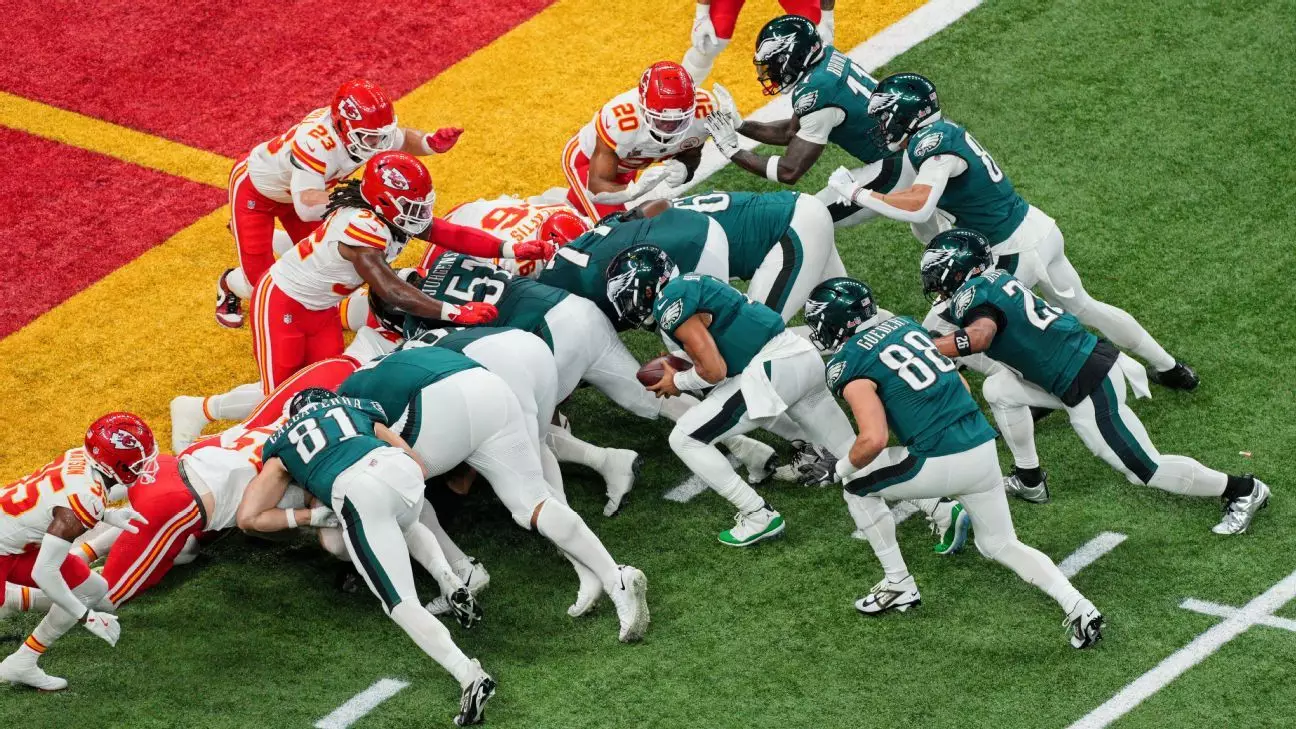In the ever-evolving landscape of the National Football League (NFL), rule changes and player safety are continually at the forefront of discussions. Recently, the topic of the “tush push,” a quarterback sneak play, has captured attention following a proposal put forward by an undisclosed NFL team to ban this controversial tactic. The conversation around the tush push engages various stakeholders within the league and raises questions about the effectiveness and safety of such plays.
The “tush push” is a strategic offensive move where offensive players position themselves behind the quarterback to provide momentum, propelling him forward to gain crucial yardage. This tactic has gained popularity, notably with the Philadelphia Eagles and Buffalo Bills, who have executed it with notable success. Data suggests that these two teams have completed an impressive 163 attempts, achieving an 87% success rate for touchdowns or first downs. This contrasts starkly with the broader league’s average success rate of 71%, indicating a significant disparity in proficiency.
The Philadelphia Eagles, under the leadership of head coach Nick Sirianni, have effectively turned the tush push into a notable aspect of their playbook. Not only has it proven effective in regular games, but it also made an appearance in high-stakes moments, such as the recent Super Bowl LIX. The strategic advantage offered by this play has ignited debate among coaches, players, and officials.
Troy Vincent, the NFL’s Executive Vice President of Football Operations, disclosed that concerns over the tush push led to the recent proposal. While specific details about the concerns weren’t shared, it suggests that discussions will center around the play’s execution and its potential risks. Vincent indicated that the proposed adjustments are aimed at ensuring the play’s viability within the modern game’s context.
Critically, this proposal may stem from a broader concern about player safety and the physical risks associated with close-contact plays. The NFL has been under scrutiny in recent years regarding injuries, particularly concerning head trauma and knee injuries. The tush push, characterized by a mass of players colliding in tight quarters, could be perceived as an area of potential danger, prompting the league to reevaluate its place in the game.
Responses from players and coaches have been mixed. Coaches like Sirianni, who have successfully employed the tush push, are inclined to defend it fiercely, arguing that its strategic utilization should not be penalized simply because a few teams excel in its execution. Sirianni’s comments underscore a fundamental aspect of competitive sports: teams should be rewarded for finding unique advantages that play to their strengths.
Conversely, opponents of the play highlight the broader implications. They argue that if the play poses risks to players’ safety, then it warrants examination and potential restriction. The challenge lies in balancing innovation and tradition within the game while ensuring player welfare.
Ultimately, the fate of the tush push will be decided by NFL owners at their upcoming spring meeting. The decision will require a significant majority; 24 out of 32 owners must approve the proposal for it to move forward. As such, the upcoming discussions will encapsulate a broader debate about the nature of football, competitive equity, and safety considerations.
As discussions unfold and opinions from various stakeholders crystallize, one thing remains clear—the tension between tradition and the evolving nature of the game will continue to shape the NFL’s future. Whether the tush push will remain integral to offensive strategies or fade into the annals of NFL history remains to be seen. However, the conversations sparked by this proposal will undoubtedly carry weight in how the league navigates challenges related to gameplay, safety, and innovation.
The proposed ban encapsulates much more than a single play; it highlights a fundamental question facing the NFL today: how to adapt without compromising the core excitement of the game. This challenge will define not only present discussions but also the league’s future direction.

Leave a Reply